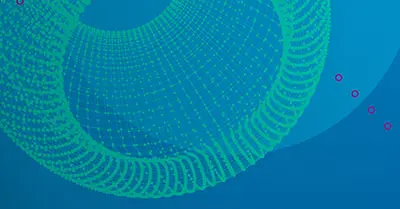What is CAASM?
Cyber Asset Attack Surface Management (CAASM) is a process of identifying, managing, and protecting the expanding attack surface from potential threats and risks. A CAASM solution serves as a definitive reference guide and management point, allowing IT, network, and security teams to identify and mitigate vulnerabilities across their hybrid attack surface proactively.
What is an Attack Surface?
The attack surface encompasses every point where an attacker can try to enter or extract data from your network, systems, or applications. It includes internal and external assets, such as servers, endpoints, cloud services, web applications, IoT devices, and more. The attack surface constantly changes as you add, remove, or update your assets or as new vulnerabilities are discovered or exploited.
Who needs CAASM?
Here are some examples of how IT, network, and security teams use CAASM to protect their organization:
- An IT manager receives a notice from a vendor stating that all users of a specific operating system version must upgrade to the latest version due to a security issue. They use the CAASM solution to identify which assets use a particular operating system version and recommend upgrading them immediately.
- A network engineer uses CAASM to identify network interfaces on assets not connected to any networks. Armed with this information, they fix misconfigurations and clean up unused network interface definitions.
- A firewall owner uses CAASM to review all the access rules defined for a specific firewall. They ensure that the rules are correctly defined and make fixes or optimizations where recommended.
- A security professional performs compliance and vulnerability analysis using CAASM for assets within a specific business unit or the entire organization.
Multiple teams gain valuable insight with one solution and can work together to ensure their organization stays secure.
How does an organization benefit from CAASM?
A CAASM solution enables teams to visualize the attack surface, combining asset and security data into a dynamic security model that is continuously updated with the latest intelligence.
Automatically combining data from different silos helps an organization create a single source of truth. This consolidated data can be used for analysis and incident response, which eliminates the need for manual processes that are both time-consuming and potentially error-prone. Using this approach, the team can respond more effectively to incidents and emerging threats.
CAASM is an automated tool that monitors an organization’s attack surface, especially during significant changes like mergers and divestments. It can detect shadow IT and assist in identifying any misconfigurations or non-compliant controls that may otherwise go unnoticed, putting the organization at risk of cyber-attacks.
Implementing a CAASM solution provides an organization with a proactive defense strategy against cyber threats. By utilizing the model, security professionals can identify critical assets and visualize potential attack paths that hackers might use to compromise those assets. Additionally, CAASM can be used by red team and penetration testing personnel to simulate attacks, determine entry points, and track lateral movement across the attack surface. This extra data allows organizations to identify and address any unintentional gaps in their security that may have been overlooked.
What should I look for in a CAASM tool?
- CAASM works by using connectors to ingest infrastructure and security data from separate data silos across the organization. It must support a wide range of connectors to provide the most complete picture of the attackable assets, incorporating data from IT and OT environments, on-premise, and out into the hybrid cloud.
- The CAASM tool should provide a complete inventory of your network, server, and cloud assets for increased visibility of your overall threat surface. It must also maintain a comprehensive understanding of firewall and network security policy. From a business perspective, it should also collate Information such as asset location, ownership, importance, and user access collected from organizational directories.
- A good CAASM tool needs to do more than collect data. It needs to provide insights into the vulnerabilities and security risks associated with each asset and visualize this information in a way that makes it easy to act on. Look for a tool that builds and maintains a dynamic security model of the attack surface. The model must combine the assets with understanding firewall and network security policy, including route, access, and permission data. It must also overlay threat intelligence from the broadest range of sources, including security controls, patch repositories, vulnerability, and threat scanner data.
- CAASM tools should make it easy to visualize the attack surface. Look for tools that enable you to explore the attack surface, for example, by zooming in on an asset to check patch history and vulnerabilities. This knowledge helps analyze exposure and prioritize remediations based on what is most important to the business. The CAASM tool can also show how an attacker could gain entry and exploit a vulnerable asset. You should be able to trace every step of the attacker’s route across the attack surface – right down to the individual device(s), configurations, and rules that would enable the attack and what steps you could take to block it.
- The right CAASM tool will also enable you to quickly identify internet-facing assets with vulnerabilities that could be exploited and those that could be subject to lateral attack; for example: from supply chain partner networks or even insider threats. Armed with this information, security teams can use CAASM to prioritize defending the assets most critical to the business.
Conclusion
CAASM is a process of identifying, managing, and protecting the expanding attack surface from potential threats and risks. It helps you gain visibility, discover and prioritize vulnerabilities and exposures, mitigate risks, monitor and measure your security performance, and comply with standards and best practices. CAASM can help you improve your cyber security posture and reduce the attack surface.
Discover how Skybox can help you get visibility to your total attack surface:


